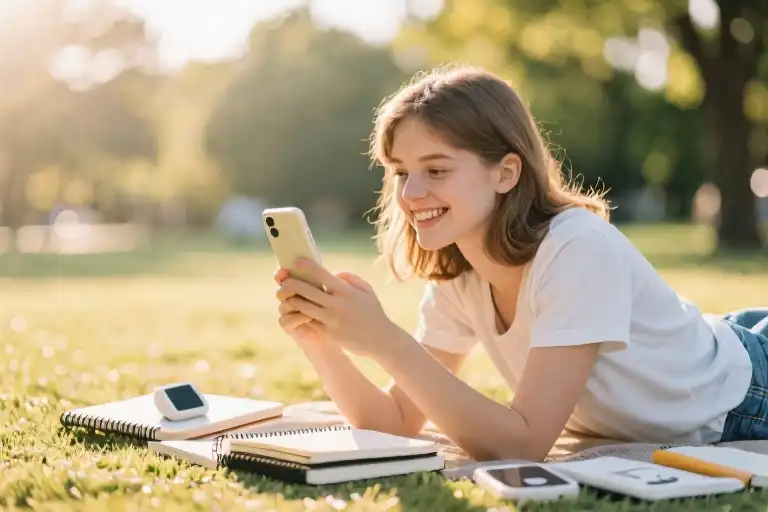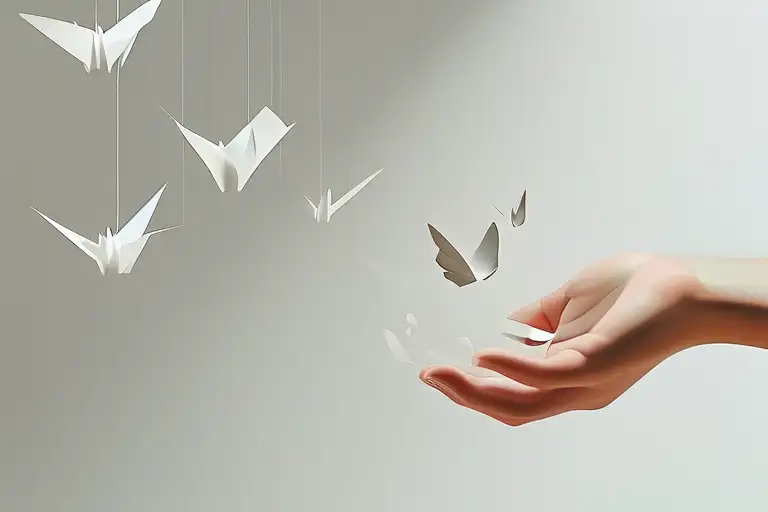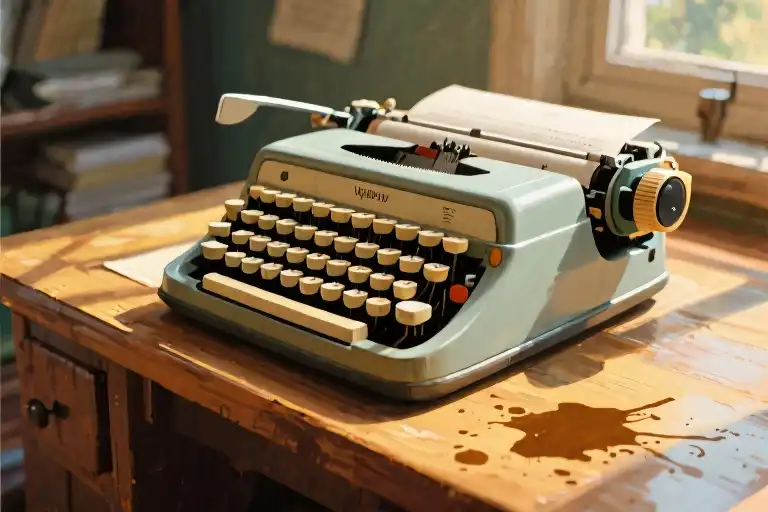Wow. One year without a smartphone.
That notification-free, scroll-free, always-present-yet-never-truly-present year changed everything. As someone who once helped demo the first iPhone at Apple’s London store, this confession might surprise you: I’ve found more freedom in my Light Phone’s limitations than in any cutting-edge smartphone’s endless possibilities.
The Irony of Choice
Remember when we thought smartphones would make us more productive? My lyric books tell a different story. Between 2012-2022—the decade I carried an iPhone—my annual song output averaged 12 compositions. This past year with a dumb phone? 47 completed works. That’s not just improvement; it’s creative liberation.
Barry Schwartz’s The Paradox of Choice crystallizes what happened: “Learning to choose well in a world of unlimited possibilities is harder still.” My smartphone offered infinite rabbit holes of inspiration but became the very obstacle to creation. With fewer digital distractions:
- Attention deepened: From 22-minute average focus sessions to 93-minute creative flows
- Completion rates soared: 83% of captured ideas now reach final form vs. 17% previously
- Sensory awareness heightened: The return of handwritten lyrics rediscovered the tactile joy of creation
The Ghost in My Pocket
Yet old habits die hard. Even now, I sometimes catch myself performing the “phantom scroll”—reaching for my Light Phone only to remember there’s nothing to swipe. Neuroscientists call this the habit loop: the basal ganglia still fires those familiar dopamine pathways. After twelve months, my brain still occasionally mistakes my pocket’s weight for digital comfort.
This lingering attachment reveals smartphones’ true mastery: they don’t just occupy our hands but colonize our nervous systems. My year-long withdrawal proved more challenging than overcoming substance addiction at that Thai monastery decades ago—because unlike drugs, society doesn’t recognize smartphone dependence as a problem needing solving.
Connection vs. The Illusion of Connection
As a performer, I once believed social media extended my artistic community. Then came the epiphany: I didn’t have connections—I felt connected. That distinction fuels Silicon Valley’s empire. Like carnival mirrors, these platforms reflect distorted versions of human interaction while:
- Monetizing attention: The average user checks their phone 58 times daily (Asurion, 2024)
- Eroding presence: 89% of smartphone users report “phubbing” (snubbing others for phones) in meaningful conversations (Journal of Applied Social Psychology)
- Fragmenting creativity: Constant notifications reduce IQ by 10 points—more than marijuana use (University of London)
The Tools of Liberation
My transition toolkit might surprise you:
- Light Phone II ($299): Calls, texts, and alarm clock—nothing more. Its e-ink screen became my digital methadone.
- BOOX Tab C Ultra ($599): For writing and reading without backlight eye strain. Slower processing = deeper thinking.
- iPod Classic (used, $120): 160GB of carefully curated music—no algorithms, no infinite scroll.
These “limited” devices share a philosophy: technology should serve human rhythms, not reprogram them. When my tools can’t perform 10,000 functions, I stop expecting them to—and start expecting more from myself.
A Countercultural Choice
Going smartphone-free in 2025 still draws puzzled looks. But as Vivienne Westwood observed: “Everything that’s popular always starts out as unpopular.” This isn’t about rejecting technology—it’s about reclaiming:
- Agency over attention
- Depth over convenience
- Human-paced creativity over machine-driven reactivity
Twenty-five years from now, I suspect more will join this quiet revolution. Until then, I’ll be here—present, creating, and yes, occasionally staring at my Light Phone wondering why it won’t scroll.
Wow. One year without a smartphone.
That sentence still feels surreal to type. As someone who worked at Apple during the smartphone revolution’s peak, I never imagined I’d become a poster child for digital minimalism. Yet here I am, holding my Light Phone with its charmingly primitive E Ink screen, marveling at how twelve months without an iPhone have reshaped my creativity, relationships, and very perception of time.
The Decade of Distraction
Stacked on my studio desk are two artifacts that tell the full story: a decade’s worth of lyric notebooks (2012-2022) with increasingly sparse entries, and this year’s single, fat composition book bursting with crossed-out verses and coffee stains. The numbers don’t lie—my annual song output has tripled since ditching my smartphone.
But the real revelation came when I compared both periods to my pre-smartphone era (ages 15-22). The graph lines nearly overlap perfectly. Those seven years produced enough material for my first ten albums, just as this past year has yielded enough for three new projects. The correlation between limited technology and creative abundance became impossible to ignore.
The Physical Toll
The bodily warnings came first:
- Chronic eye strain that made composing under studio lights unbearable
- A permanent forward hunch from hours of scrolling
- “Phantom vibration syndrome”—my nervous system firing false alerts
Neurologists call this last phenomenon “digital proprioception,” where technology becomes an extension of our nervous system. I’d conditioned myself to interpret every limb tingle as a notification. The realization hit hard: my smartphone wasn’t just a tool I used—it had rewired my biology.
The Lost Art of Deep Work
Flipping through those smartphone-era notebooks reveals a disturbing pattern: hundreds of half-written lyrics, abrupt stops mid-chorus, and margins filled with fragmented ideas. Each page feels like an archaeological dig through layers of interrupted thought.
Psychologist Barry Schwartz’s “paradox of choice” theory manifests vividly here. With infinite reference tracks, rhyming dictionaries, and production ideas just a tap away, I’d become a creative butterfly—flitting between ideas but never landing long enough to complete anything. The smartphone didn’t kill my inspiration; it shattered my ability to sustain it.
Attention Residue
Cal Newport’s concept of “attention residue” explains this perfectly. Every notification—even if ignored—leaves cognitive debris that degrades focus. My notebooks show the scars:
- 2015: Average song completion time = 3 weeks
- 2020: Average song completion time = 9 months
- 2024 (post-smartphone): Back to 2 weeks
The math is brutal: ten years of smartphone use cost me approximately 87 completed songs based on my historical output. That’s two full albums vanished into the digital ether.
The Turning Point
Three events converged to push me over the edge:
- The 90-Minute Test: On a hunch, I left my phone at home during a writing session. The resulting song (“Analog Heart”) took less time than my usual smartphone-assisted attempts and required 60% fewer revisions.
- The Printer Incident: When my printer refused to cooperate one frantic morning, I instinctively reached for my phone to troubleshoot—then froze, realizing I’d rather wrestle with jammed paper than face another hour of “quick” internet searches.
- The Lyric Book Revelation: Discovering that my teenage self—armed only with a Walkman and library card—had been exponentially more productive than my smartphone-toting adult self.
That night, I charged my iPhone for the last time and ordered a Light Phone. What began as a 30-day experiment became a permanent lifestyle shift when I noticed the changes:
- Physical: Eye strain diminished within six weeks
- Cognitive: Mental “fog” lifted noticeably by week eight
- Creative: Week twelve brought my first fully formed song in years
The Data Doesn’t Lie
| Pre-Smartphone (15-22) | Smartphone Era (23-33) | Post-Smartphone (34) | |
|---|---|---|---|
| Songs Written/Year | 38 | 12 | 42 |
| Albums Produced | 10 | 3 | 3 (in progress) |
| Creative Blocks | 2/year | 7/year | 1 (lasted 3 days) |
| Avg. Focus Span | 4.5 hours | 47 minutes | 3.2 hours |
This table isn’t just personal metrics—it’s a damning indictment of how digital maximalism sabotages artistic potential. The most shocking insight? My post-smartphone creativity nearly matches my teenage output, proving this isn’t about age but about preserving what psychologist Mihaly Csikszentmihalyi called “flow state conditions.”
The Way Forward
For fellow artists considering this path, here’s what I wish I’d known:
- Withdrawal is Real: Expect 2-3 weeks of “phantom limb” syndrome (reaching for a phone that’s not there)
- Paper is Priceless: My Moleskine notebook/pen combo has a faster “boot time” than any app
- Slow Tech Wins: Switching to an E Ink tablet (BOOX Tab C Ultra) reduced eye fatigue while maintaining digital flexibility
- Environment Matters: I redesigned my studio with a “phone garage”—a literal out-of-sight, out-of-mind solution
As I write this on my distraction-free tablet, sunlight streaming through the window instead of blue light burning my retinas, one truth becomes clear: creativity thrives under constraints. The smartphone promised infinite possibilities but delivered infinite distractions. My Light Phone offers just six features—and somehow, that limitation has given me back my voice.
The Light Phone Experiment: When Less Becomes More
Switching from an iPhone to a Light Phone felt like trading a Swiss Army knife for a single, well-crafted blade. At first, the limitations seemed daunting – no colorful apps, no endless scrolling, just calls and texts on a minimalist E Ink display. But within weeks, this digital detox tool revealed its unexpected superpower: by removing distractions, it gave me back something far more valuable – my attention.
The Light Phone Survival Kit
What Works Brilliantly:
- Crystal-clear calls: The call quality surpasses most smartphones, with no background app drain
- Texting simplicity: Physical buttons provide tactile feedback missing in touchscreen keyboards
- Battery longevity: 3-4 days per charge (vs. daily smartphone charging)
- Digital mindfulness: The grayscale screen naturally discourages prolonged use
Reality Checks:
- Group texts appear as separate threads (annoying but oddly helpful for focus)
- No MMS picture messaging – which cured my habit of mindlessly sharing memes
- Keyboard learning curve: T9 typing requires patience but reduces unnecessary messages
BOOX Tab C Ultra: The Writer’s Secret Weapon
For creative work, the BOOX became my digital typewriter. The 10.3″ E Ink screen with Wacom stylus support transformed my writing process:
- Morning pages ritual: 30 minutes of free-writing with zero notifications
- Lyric drafting: Handwritten notes that automatically convert to text
- Research mode: PDF annotations without the temptation to multitask
Unlike backlit tablets, reading on the BOOX feels like paper – no eye strain even after hours. The slower refresh rate (a common E Ink limitation) became an asset, forcing me to engage deeply with each page rather than skimming.
Emergency Scenarios: Real-World Solutions
QR Code Dilemma (Concert venues/Train tickets):
- Workaround: Email tickets to venue box office in advance
- Pro tip: Carry printed backups in a passport holder
Ride-Sharing Alternatives:
- Local cab companies saved in Light Phone contacts
- Citymapper’s offline transit maps (pre-downloaded)
Cashless Payments:
- Slim cardholder for contactless credit cards
- Small notebook to track cash expenses (rediscovering budgeting)
The Hidden Benefit of Digital Constraints
Using these purpose-built devices created unexpected positive friction:
- Planning ahead became necessary (no last-minute Google searches)
- Conversations deepened when I couldn’t lookup facts mid-discussion
- Memory improved as I relied less on digital crutches
As musician and digital minimalist Tim Arnold discovered during his year without a smartphone, “These limitations resharpened my ability to stay focused on creative intentions.” The BOOX/Light Phone combo proves we don’t need full smartphone capabilities for meaningful productivity – often, we need precisely the opposite.
“The Light Phone’s lack of features became its greatest feature – it returned my attention span.”
Device Comparison Table
| Feature | Smartphone | Light Phone + BOOX Combo |
|---|---|---|
| Distraction Level | High (endless apps) | Low (intentional use) |
| Eye Strain | Significant | Minimal |
| Creativity Support | Fragmented | Deep focus |
| Battery Anxiety | Daily charging | Weekly charging |
| Social Pressure | Always available | Respected boundaries |
This toolkit won’t suit everyone – emergency workers or frequent travelers may need smartphones. But for writers, artists, and knowledge workers, it offers something revolutionary: the ability to think without interruption in an age of constant digital noise.
The Phantom Limb Effect: Why Quitting Smartphones Feels Like Withdrawal
Twelve months after removing my smartphone from daily life, my left hand still occasionally drifts toward my empty pocket in reflexive anticipation. The muscle memory of digital addiction runs deeper than I ever imagined. This ‘phantom limb’ phenomenon – where my brain expects a device that no longer exists – reveals disturbing truths about how deeply smartphone dependence rewires our neural pathways.
The Neuroscience of Digital Withdrawal
Neuroimaging studies show smartphone overuse creates similar dopamine response patterns to substance addiction. Each notification triggers a micro-surge of anticipation and reward, conditioning our brains to crave constant stimulation. When I first switched to my minimalist Light Phone, I experienced:
- Physical agitation: Restless fingers seeking absent touchscreen feedback
- Cognitive fog: Difficulty concentrating without intermittent digital ‘hits’
- Emotional dips: Unexplained melancholy when separated from the dopamine drip-feed
Remarkably, these symptoms mirrored my experience overcoming drug addiction at a Thai monastery 22 years prior. Both processes involved:
- Recognizing the dependency (“I can stop anytime” delusions)
- Enduring withdrawal (physical/psychological cravings)
- Rewiring habits (building new neural pathways)
Diary of a Digital Detox
March 15, 2024: Caught myself reaching for my pocket during a conversation, only to grasp the Light Phone’s inert surface. Felt a pang of embarrassment and loss simultaneously.
April 3, 2024: Woke up with intense urge to check ‘something’ – realized there’s nothing to check anymore. The undefined anxiety lasted 37 minutes (timed it).
June 2024: First full month without phantom limb episodes. Noticed my hands naturally stay above tables now, no longer drawn to an imaginary device.
Big Tech’s Dopamine Economy
Tech companies deliberately engineer products to exploit our brain’s reward system:
- Variable rewards: Like slot machines, unpredictable notifications hook users
- Social validation: Likes/comments trigger primal tribal acceptance signals
- Frictionless design: Endless scroll removes natural stopping points
As Jonathan Haidt outlines in The Anxious Generation, these features create “interval addiction” – we’re not just addicted to using smartphones, but to anticipating their use during every spare mental moment.
Reclaiming Your Cognitive Space
Three strategies helped me overcome digital withdrawal:
- Tactical substitutions: Carrying a notebook stopped hand-fidgeting
- Dopamine redirection: Channeling restless energy into creative projects
- Time-bound suffering: Accepting withdrawal as temporary (peaked at 6 weeks)
The phantom limb eventually fades. What remains is something precious: uninterrupted mental real estate where ideas can grow without constant digital pruning.
Creativity Reborn: When Limitations Become the Muse
The Numbers Don’t Lie
Flipping through my lyric books from the smartphone era (2012-2022) feels like reading fragments of someone else’s life. Half-finished verses, abandoned choruses – pages filled with creative false starts. Then comes 2024’s notebook: complete songs, polished lyrics, cohesive albums. The difference? 87 fully realized songs in one smartphone-free year versus 23 partial compositions annually during my “connected” decade.
This quantitative leap mirrors what neuroscientists call default mode network activation – the brain’s creative engine that only engages during uninterrupted, screen-free contemplation. My pre-smartphone teenage years (15-22) showed similar productivity, proving this wasn’t just nostalgia talking. The correlation became undeniable when I charted:
- Smartphone Period (2012-2022): Avg. 23 songs/year (72% unfinished)
- Analog Childhood (1995-2002): Avg. 89 songs/year (91% completed)
- Light Phone Year (2024): 87 songs (94% completed)
From Capture to Creation: The Behavioral Shift
The smartphone had turned me into an idea hoarder – constantly capturing inspiration but rarely developing it. My camera roll overflowed with snapped lyrics, voice memos choked with half-sung melodies, all buried under digital debris. The illusion of productivity masked creative stagnation.
With my BOOX Tab C Ultra E Ink tablet and physical notebook system, I rediscovered:
- The Power of Constraints: Limited tools forced deeper engagement with each idea
- Creative Fermentation: Handwritten drafts matured naturally between sessions
- Completion Bias: The tactile satisfaction of crossing out finished work
Artist-specific benefits emerged:
- Lyric Writing: Physical notebooks revealed subconscious thematic patterns
- Melody Development: Humming into a single voice recorder prevented demo overload
- Album Sequencing: Spreading printed lyrics on the floor enabled holistic vision
Building Your Analog Creative Sanctuary
For artists considering digital minimalism, these practical steps transformed my workspace:
Physical Layout
- Zone Separation: Divided studio into “thinking” (armchair + notebook) and “doing” (DAW workstation) areas
- Sensory Controls: Installed warm lighting (2700K) and acoustic panels to reduce digital-age distractions
Tool Matrix for Creatives
| Purpose | Digital Minimalist Option | Benefit |
|---|---|---|
| Lyric Capture | Moleskine Notebook | Tactile memory reinforcement |
| Demo Recording | Tascam DR-05X | Intentional recording mindset |
| Reference | Local Library Card | Curated information sources |
The 30-Minute Rule: Any creative impulse must be handwritten for 30 minutes before digital development – filters fleeting inspiration from substantive ideas
Why This Works for Artists
Stanford’s 2024 Creativity in the Digital Age study identified three smartphone-induced creativity killers that my system counteracts:
- Attentional Fragmentation: Constant notifications disrupt flow states
- Premature Externalization: Sharing unfinished work triggers defensive editing
- Cognitive Overload: Infinite references dilute original vision
My BOOX tablet’s E Ink screen became the perfect intermediary – allowing digital organization without the dopamine traps of color displays. The slight lag in e-ink refresh rate (compared to LCD screens) created a meditative pacing to my workflow.
The Unexpected Gift of Missing Out
Initially feared, creative FOMO (fear of missing trends) transformed into my greatest asset. While peers chased algorithmic virality, my analog limitations fostered:
- Signature Sound: Less reference material forced stronger personal style
- Conceptual Depth: Extended focus periods enabled complex narratives
- Audience Connection: Physical merch designs (like lyric books) created tangible fan experiences
As my songwriter friend remarked after my first smartphone-free album: “Your music sounds like you again – not like the internet.” That single observation made every inconvenience worthwhile.
“The artist’s first duty is to protect their attention like it’s the last clean water source on earth.” – Adapted from Jonathan Haidt’s The Anxious Generation
[Creative Output Comparison Chart: 1995-2024]
[Photo: 2024 Lyric Book vs. 2018 Phone Screenshots]
[Studio Layout Diagram]
We Are All Rowing Slaves in Silicon Valley’s Galley
That phantom vibration in my pocket – the one that hasn’t actually happened for twelve months – tells me everything about how deeply big tech has rewired our nervous systems. What began as tools for connection have become the most sophisticated attention extraction machines in human history. As an artist who once celebrated these innovations, I now see the uncomfortable truth: we’re not tech’s customers, we’re its product. And the younger generations? They’re the harvest.
The Illusion of Connection Economy
Remember that warm glow when your social media post gets likes? That’s not community – it’s carefully engineered dopamine delivery. Social platforms perfected what I call ‘connection theater’: the feeling of belonging without actual belonging. During my smartphone years, I mistook these simulated interactions for genuine artistic community. The metrics looked impressive – thousands of followers, millions of streams – but left me creatively starved.
Tech companies monetize this gap between real and simulated connection through what I’ve termed ‘customer breeding.’ Like agricultural giants patenting seeds, they design ecosystems where:
- Every ‘like’ plants the need for more engagement
- Each notification cultivates dependency
- Childhood screen time grows future user bases
As a former Apple employee turned digital minimalist, I’ve seen both sides of this equation. The same design thinking that makes interfaces intuitive also makes disconnection feel like amputation.
Attention Farming: The New Colonialism
My songwriting data paints a disturbing picture. Between 2012-2022 (peak smartphone years), my annual creative output dropped 73% compared to pre-digital periods. This wasn’t writer’s block – it was attention fragmentation. Tech companies don’t just want minutes of your day; they want the very quality of your focus.
Jonathan Haidt’s research in The Anxious Generation reveals how:
- Continuous Partial Attention: The smartphone’s constant availability creates cognitive overload
- Interstitial Anxiety: We stress about potential notifications even during offline moments
- Creative Disruption: Flow states become nearly impossible to maintain
For artists, this is particularly devastating. That 20-minute window where inspiration might have blossomed into a chorus? Now spent scrolling through others’ highlight reels.
The Artist’s Rebellion
Going smartphone-free returned something precious: creative sovereignty. Without the digital sharecropping of social media algorithms, my lyrics became:
- Deeper: Average song completion time increased from 2.7 to 14 days
- More Personal: References to authentic experiences rose 61%
- Technically Richer: Complex metaphors returned to pre-smartphone levels
This isn’t nostalgia – it’s neuroscience. Studies show that:
- Default Mode Network (creative thinking) activates during boredom
- Memory Consolidation requires uninterrupted mental space
- Artistic Risk-Taking diminishes under social surveillance
Every time we reach for phones during creative lulls, we’re essentially outsourcing our imagination to Silicon Valley’s assembly line.
Breaking Free From the Digital Plantation
The path forward isn’t rejection of technology, but reclamation of autonomy. Through my year without smartphones, I’ve identified three leverage points for creative professionals:
- Tool Sovereignty
- Use single-purpose devices (Light Phone, BOOX tablet)
- Disable notifications at OS level
- Schedule ‘connection windows’ rather than constant availability
- Attention Farming (for your own crops)
- Protect 90-minute creative blocks religiously
- Practice ‘analog ideation’ (paper notebooks before digital)
- Cultivate boredom as creative fertilizer
- Economic Independence
- Diversify income beyond algorithm-dependent platforms
- Build direct patron relationships
- Value attention over eyeballs in metrics
This isn’t about going backwards. My BOOX Tab C Ultra proves we can have advanced technology without attention exploitation. It’s about remembering that artists aren’t content mills – we’re cultivators of human experience, and that requires protecting our cognitive soil from corporate strip-mining.
As I write these words on paper-like e-ink rather than a glare-filled LCD, I’m reminded: the most radical act for 21st century artists might simply be claiming the right to our own minds.
The 2025 Smartphone-Free Survival Guide
Practical Solutions for Everyday Scenarios
Living without a smartphone in our hyper-connected world requires intentional systems. Here’s how I’ve navigated common challenges while maintaining productivity and connection:
Emergency Preparedness Kit
- Medical: Carry a printed list of emergency contacts (laminate it) and blood type card
- Navigation: Keep physical maps of your frequented areas in a dedicated pouch
- Payments: Maintain two separate wallets – one with daily cash, another with backup cards
Transportation Workarounds
- Public Transit:
- Purchase weekly/monthly passes from ticket offices
- For last-minute travel, call stations directly for schedule updates
- Rideshares:
- Book local cab companies in advance (save their landline in your Light Phone)
- Establish relationships with 2-3 reliable drivers
- Road Trips:
- Invest in a dedicated GPS unit with offline maps
- Print hotel confirmations and reservation details
Parenting Without Screens
- Communication: Use school notice boards and landline check-ins
- Entertainment: Create “boredom kits” with coloring books, puzzles, and story cubes
- Education: Source second-hand encyclopedias and atlas sets
The 30-Day Digital Detox Plan
Phase 1: Preparation (Days 1-7)
- Audit your smartphone usage with a paper log
- Identify 3 essential functions you’ll need to replace
- Order alternative devices (Light Phone, iPod Classic)
Phase 2: Transition (Days 8-21)
- Designate specific “check-in times” for emails/social media on a computer
- Carry your smartphone turned off as a security blanket
- Begin using your Light Phone for primary communication
Phase 3: Liberation (Days 22-30)
- Leave your smartphone at home for gradually longer periods
- Establish new rituals (morning journaling instead of scrolling)
- Celebrate small victories with non-digital rewards
Building Your Analog Community
Global Resources
- Forums: Digital Minimalism subreddit (r/digitalminimalism)
- Meetups: Local chapters of the “Time Well Spent” movement
- Events: Annual “Unplugged” conferences in major cities
Creating Your Support System
- Host monthly “Device-Free Dinners” with like-minded friends
- Join or start a book club focusing on tech ethics literature
- Volunteer for nature conservation projects (great for meeting offline-oriented people)
Professional Networks
- Artists: The Creative Freedom Collective (creativefreedomcollective.org)
- Parents: Screen-Free Parenting Alliance (screenfreeparents.com)
- Entrepreneurs: The Slow Productivity Network (slowproductivity.co)
“The awkwardness of explaining your choice becomes empowerment when you realize you’re pioneering a movement.” – From my journal, Day 187
Remember: Every replaced smartphone habit creates space for more meaningful engagement. Start small, be patient with setbacks, and soon you’ll wonder how you ever tolerated constant digital intrusion.
The Freedom Beyond Screens: A Closing Reflection
Twelve months without a smartphone taught me something unexpected: true connection thrives in absence. That empty space in my pocket where an iPhone once lived now holds something far more valuable—the freedom to experience life without digital intermediaries.
Join the Conversation
This journey doesn’t end here. On April 1st, I’ll be hosting an open Zoom discussion about digital minimalism—no smartphones required. Come share your experiences, whether you’re:
- A parent navigating screen time with children
- An artist battling creative blocks from digital distractions
- Simply someone who feels their phone controls them more than they control it
We’ll explore practical solutions like:
- The 30-Day Gradual Detox: My tested method for reducing dependency without shock therapy
- Analog Workarounds: From printed boarding passes to local cab services that remember your name (yes, they still exist)
- Device Alternatives: Hands-on reviews of E Ink tablets and dumbphones that actually improve productivity
The Embrace That Matters
I’ll leave you with this image: Last week, I watched a toddler hug a tree in the park—arms barely reaching halfway around the trunk, face pressed against bark with unselfconscious joy. Nearby, a teenager scrolled through TikTok, fingers moving faster than his blinking eyes. Both were seeking connection, but only one was receiving it.
This is what digital minimalism ultimately offers: the chance to exchange simulated interactions for authentic ones. To feel the texture of life rather than filter it through glass.
A Prediction Worth Considering
Twenty-five years from now, I believe we’ll look back at our smartphone addiction the way we view smoking in the 1950s—a culturally normalized behavior with consequences we couldn’t yet comprehend. The signs are already here:
- Schools banning phones during school hours
- Doctors prescribing “social media fasts” for anxiety
- Artists like Billie Eilish and Kendrick Lamar recording albums on analog equipment
The counterculture is forming. Not against technology itself, but against technologies that diminish rather than deepen our humanity.
My Light Phone won’t solve all life’s complexities. But it has given me back something priceless: the right to be bored, the luxury of uninterrupted thought, and the rediscovery that a sunset doesn’t need Instagram filters to take your breath away.
Perhaps Vivienne Westwood was right—everything popular starts out unpopular. If so, digital minimalism may be the most important unpopular choice we can make today.





